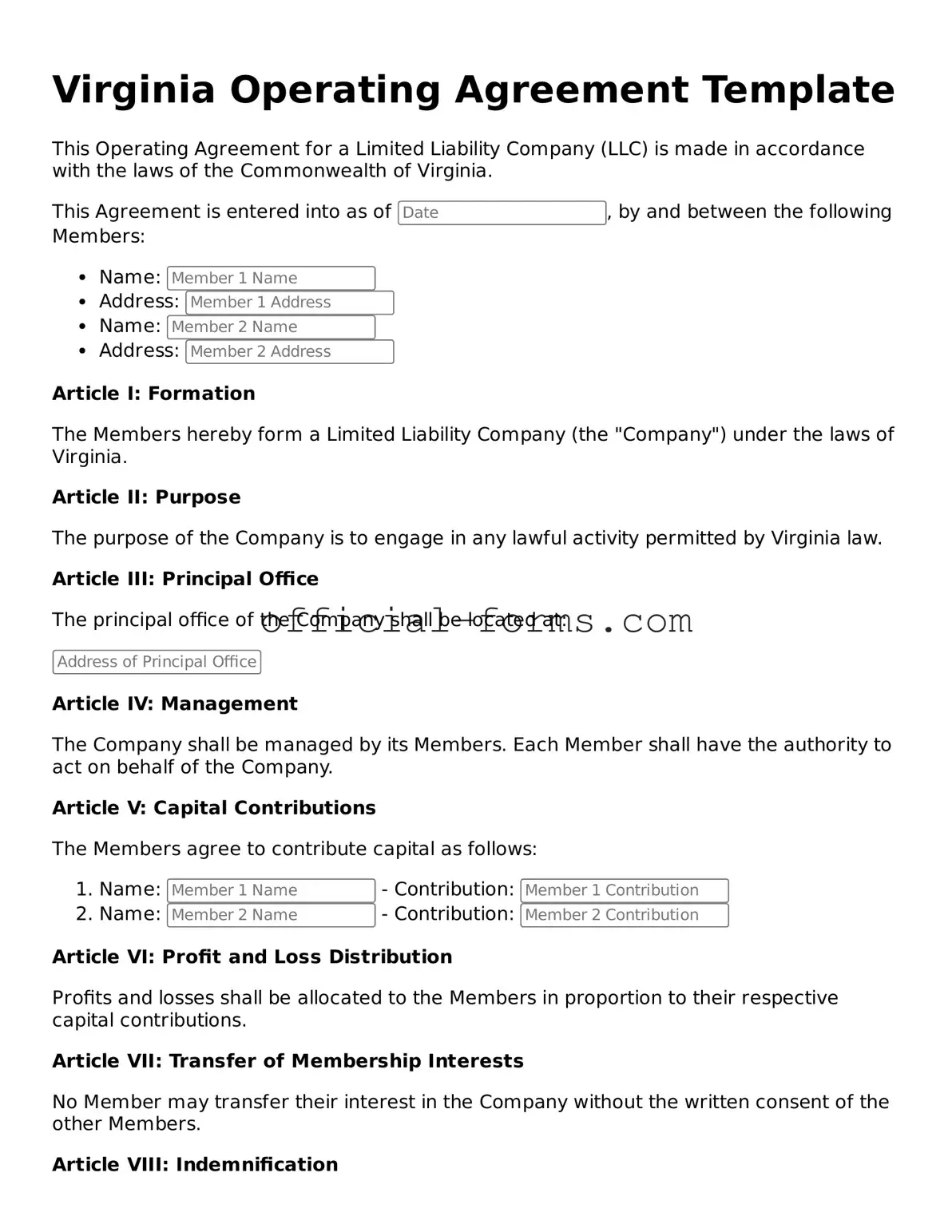Official Virginia Operating Agreement Document
The Virginia Operating Agreement form is a crucial document that outlines the management structure and operational procedures of a limited liability company (LLC) in Virginia. This agreement serves to protect the interests of its members by clearly defining roles, responsibilities, and the distribution of profits. Understanding the importance of this form is essential for anyone looking to establish a successful business in the state.
Open My Operating Agreement Now
